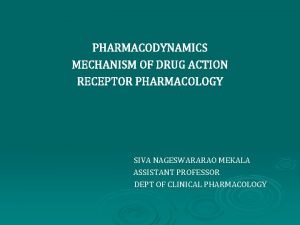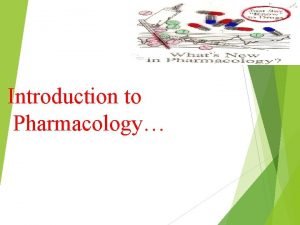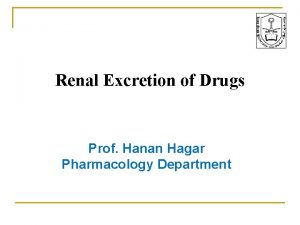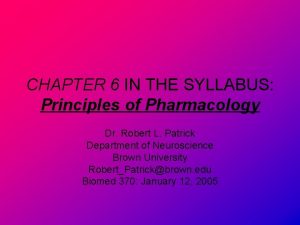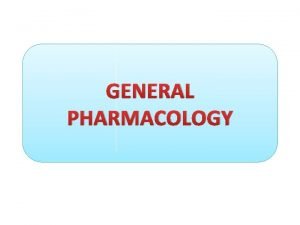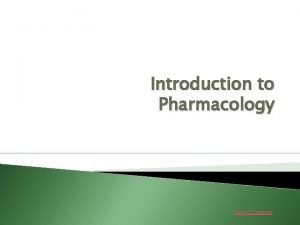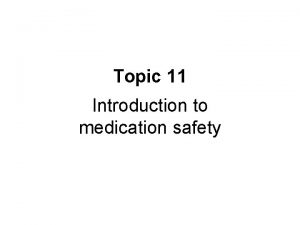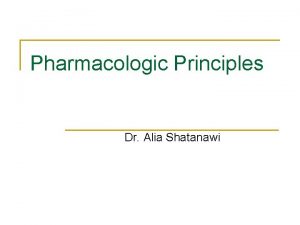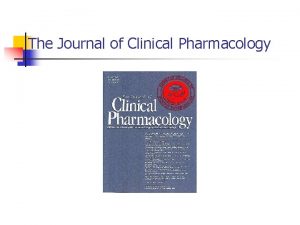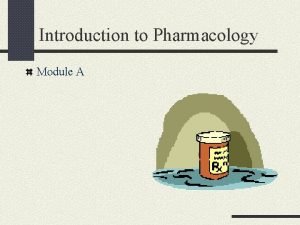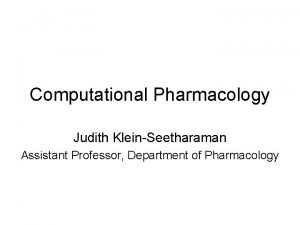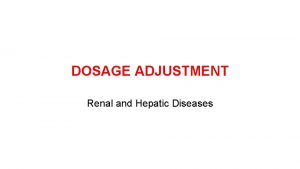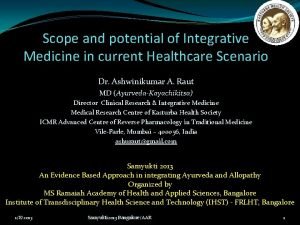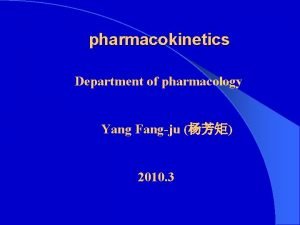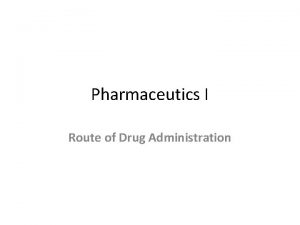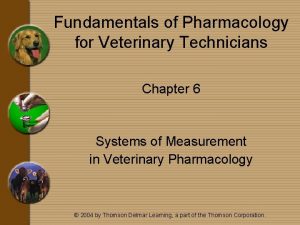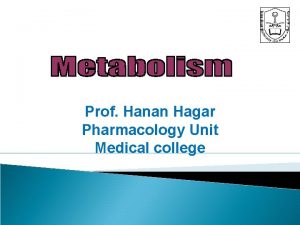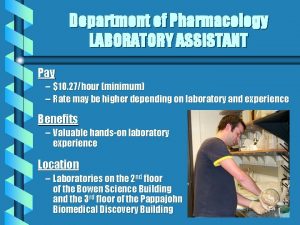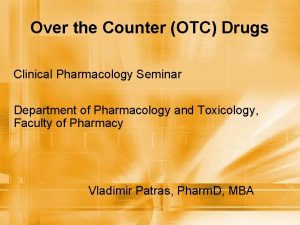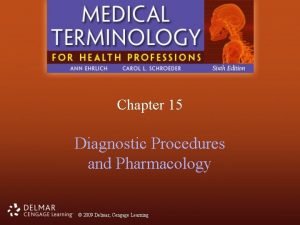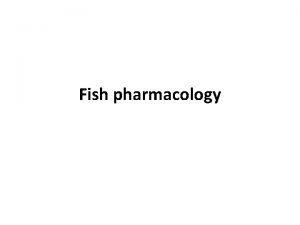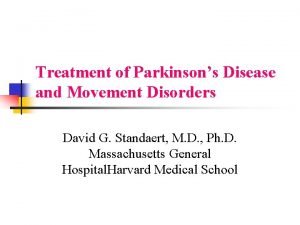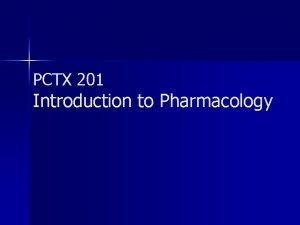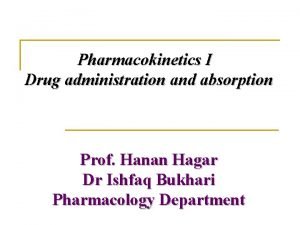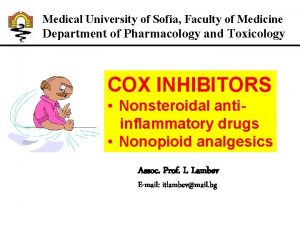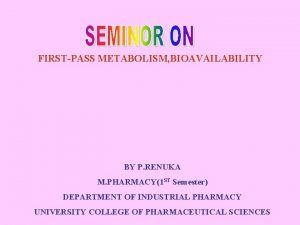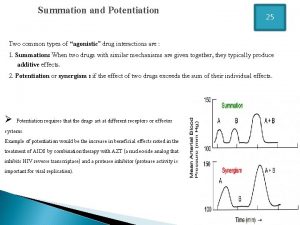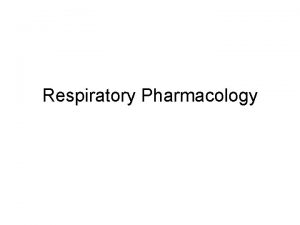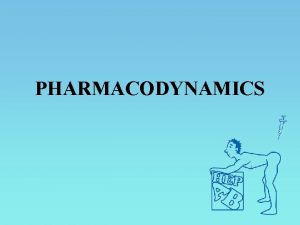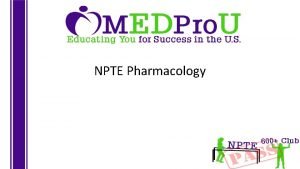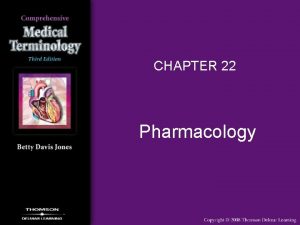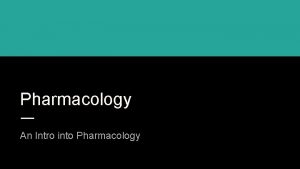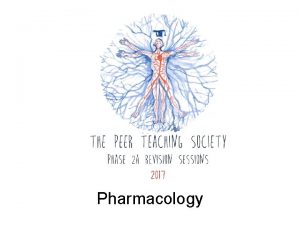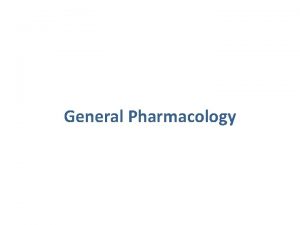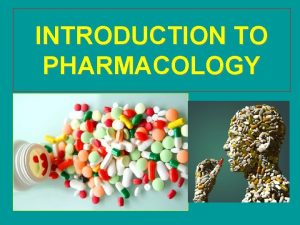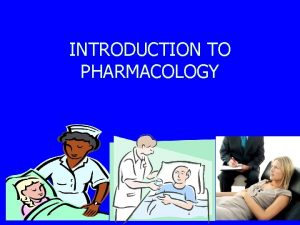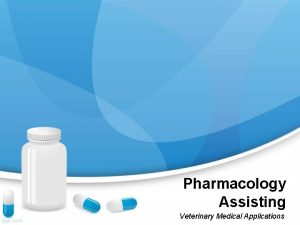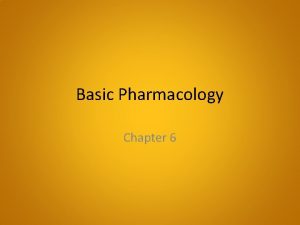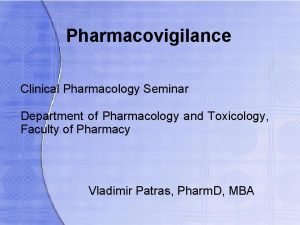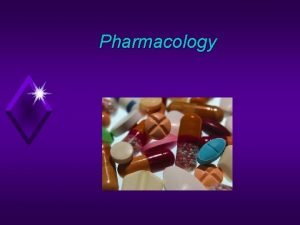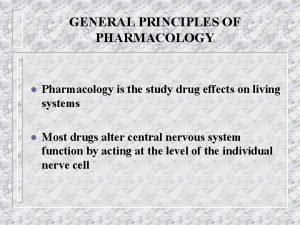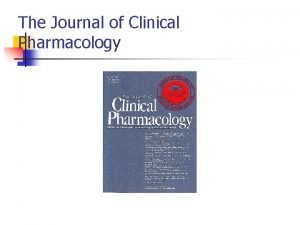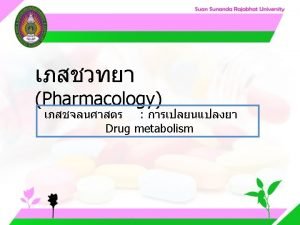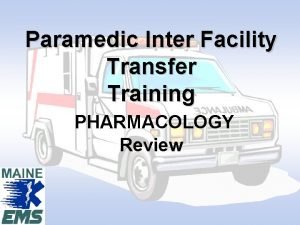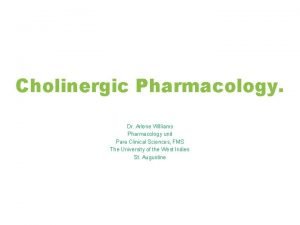Pharmacology n n n n n n n



































- Slides: 35

Pharmacology n 授課老師 n n n 老師 老師 成績評量 n n n 王素珍 洪啟峰 吳文彬 田履黛 出席, 平常表現 25% 期中, 期末考試 75% 參考書籍 n Lippincott’s Illustrated Reviews: Pharmacology, 3 rd ed, 2006

Orientation to Pharmacology Lu-Tai Tien, Ph. D. Department of Medicine School of Medicine Fu-Jen Catholic University

Ready to study pharmacology? n Pharmacology is a science that draws on information from multiple disciplines, including anatomy, physiology, psychology, chemistry, and microbiology etc.

Four basic terms n n Drug Pharmacology Clinical pharmacology Therapeutics/pharmacotherapeutics

Drug n A drug is define as any chemical that can affect living processes. n All chemicals can be considered drugs, since, when given in large enough amounts, all chemicals will have some effect on life.

Pharmacology n Pharmacology can be defined as the study of drug and their interactions with living systems. n n the physical and chemical properties of drugs as well as their biochemical and physiologic effects knowledge of the history, sources and uses of drugs as well as knowledge of drug absorption, distribution, metabolism, and excretion

Clinical pharmacology n Clinical pharmacology is defined as the study of drugs in humans. n This discipline includes the study of drugs in patients and in healthy volunteers.

Therapeutics n n Therapeutics, also known as pharmacotherapeutics, is defined as the use of drugs to diagnose, prevent, or treat disease. Alternatively, therapeutics can be defined simply as the medical use of drugs.

Properties of an ideal drug n n n Effectiveness Safety Selectivity

Additional properties of an ideal drug n n n n Reversible action Predictability Ease of administration Freedom from drug interactions Low cost Chemical stability Possession of a simple generic name

No drug is ideal…… n n n No drug is safe. All drugs produce side effects. Because medications are not ideal, all members of the healthcare team must exercise care to promote therapeutic effects and minimize drug-induced harm.

Why should a nursing student learn about drugs?

Key point n You are the patient’s last line of defense against medication errors.

Evolution of nursing responsibilities reading drugs n Five rights n A nurse’s responsibility regarding medications focused mainly on the five rights of drug administration: give the right drug to the right patient in the right dose by the right route at the right time

Contributions from a nurse n n n Your knowledge of pharmacology has a wide variety of practical applications in patient care and patient education. By applying your knowledge of pharmacology, you will make a large contribution to achieving therapeutics objective of maximum benefit with minimum harm. Application of the nursing process in drug therapy is directed at individualizing treatment, which is critical to achieving therapeutic objectives.



藥物動力學四大過程 n n 藥物的吸收 (Absorption) 藥物的分佈 (Distribution) 藥物的代謝 (Metabolism) 藥物排泄 (Excretion/elimination)







The four primary receptor families



劑量反應曲線 Linear scale Logarithmic scale

Efficacy (最大藥效) Potency (效價)

Affinity (親和力) n n n The strength of the attraction between a drug and its receptor 藥物和其接受體接合 的強度 親和度以 Kd 表示

ED 50 n n The dose for average effective dose The dose at the middle of the frequency distribution curve




 Receptors in pharmacology
Receptors in pharmacology Branches of pharmacology
Branches of pharmacology Pharmacology of drugs acting on respiratory system
Pharmacology of drugs acting on respiratory system What is ion trapping in pharmacology
What is ion trapping in pharmacology Basic principles of pharmacology
Basic principles of pharmacology Adrenal drugs pharmacology
Adrenal drugs pharmacology Significance of protein binding
Significance of protein binding Slidetodoc.com
Slidetodoc.com Annual review of pharmacology and toxicology
Annual review of pharmacology and toxicology Rationale meaning in pharmacology
Rationale meaning in pharmacology Alia drug testing
Alia drug testing Clinical pharmacology
Clinical pharmacology Pharmacology module
Pharmacology module Computational pharmacology
Computational pharmacology Venipuncture radiologic technologist
Venipuncture radiologic technologist Loading dose formula in pharmacology
Loading dose formula in pharmacology Reverse pharmacology
Reverse pharmacology Bioavailability
Bioavailability First pass effect in pharmacology
First pass effect in pharmacology Fundamentals of pharmacology for veterinary technicians
Fundamentals of pharmacology for veterinary technicians Enzyme inducer drugs
Enzyme inducer drugs Pharmacology pay
Pharmacology pay Clinical pharmacology seminar
Clinical pharmacology seminar Chapter 15 diagnostic procedures and pharmacology
Chapter 15 diagnostic procedures and pharmacology Fish pharmacology
Fish pharmacology Dopamine blockers
Dopamine blockers Pharmacology chapter 1
Pharmacology chapter 1 Drug excretion
Drug excretion Basic & clinical pharmacology
Basic & clinical pharmacology Hepatic extraction ratio
Hepatic extraction ratio Summation drug interaction
Summation drug interaction Therapeutic index
Therapeutic index Mdi pharmacology
Mdi pharmacology Glomerular filtration
Glomerular filtration Difference between tolerance and tachyphylaxis
Difference between tolerance and tachyphylaxis Basic principles of pharmacology
Basic principles of pharmacology
